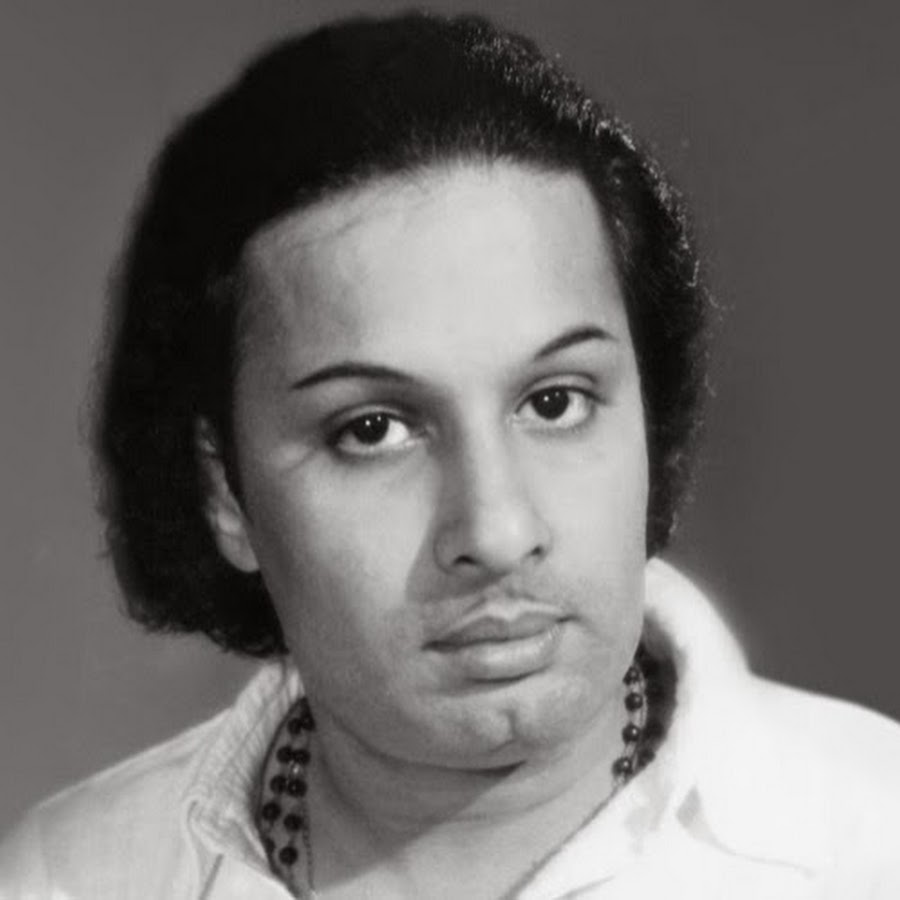The height of emotional response that ‘MGR’ could evoke was evident when in 1987 during a critical illness, 22 people committed suicide in the hope their deaths would save him! Stories of poor people selling their blood in order to get money to see his films on first release are legendary!
Born Marudur Gopalamenon Ramachandran in Kandy, Sri Lanka on 17th January, 1917, his family moved to Tamil Nadu where they lived in poverty. When he was 6, he joined a theatre group – the Madurai Original Boys. Here he picked up acting, dancing and swordplay.
MGR made his screen debut in Ellis R Dungan’s Sathi Leelavathi (1936) but his first major breakthrough came much, much later with Rajakumari (1947). However, in spite of playing his first lead role in Rajakumari, he went back to supporting roles until he played the honest commander-in-chief of the kingdom in Manthiri Kumari (1950). Though he was overshadowed by villain S Natarajan’s flamboyant over the top act, Manthiri Kumari nevertheless made MGR a star and set him up on the path to a glorious career.
MGR’s 1950s screen persona in adventure films constructed an image of political as well as physical invincibility. Often the themes of his films were derived from heroic ballads which are part of the oral tradition of rural Tamil Nadu. For example – Madurai Veeran (1956), one of his most popular films, is based on the legend of Madurai Veeran, a popular deity of Southern Tamil Nadu. His legend has been the subject of various ballads and plays and this was the second filmed version of the story.
In the 1960s MGR turned to more ‘realistic’ fantasies mostly in a contemporary setting often playing someone from the oppressed class – a peasant, taxi driver or fisherman. For millions of fans, his image as the knight in shining armour, saving damsels in distress and being totally dutiful towards his mother was in fact a reality. Mother tongue, motherland and motherhood were what he based his popularity on. To quote MSS Pandian in The Image Trap: MG Ramachandran in Film and Politics…“The social universe of the MGR is a universe of asymmetrical power…….The conflict between the upper caste/ class oppressors and MGR as a subaltern, and its resolution forms the core of the film. MGR, in the course of the conflict, appropriates several signs or symbols of authority or power from those who dominate.”
MGR used food, colour patterns (black and red, symbols of the DMK) and masquerades (often through double roles of oppressor and oppressed) to construct this universe. In Engal Thangam (1970) for example, MGR playing a truck driver Thangam, fights, sings, cares for the poor and preaches against smoking and drinking. The DMK colours – black and red are frequently featured in the clothes he wears. He even appears as himself in the opening scene at a Small Savings Function. Thangam is in the audience and even refers to him as ‘Vathiyar’ (Teacher), the reverent title by which he was known to his fans!
MGR is known for his pairing with B Saroja Devi. Beginning in 1958 with Nadodi Mannan, the pair acted together in some hugely successful films before parting ways with Arasa Kattalai (1967). Incidentally, the last named also starred J Jayalalithaa, who would go on to make a popular teaming with MGR thereafter. Though his films with Jayalalaithaa too were largely successful, his pairing with Saroja Devi in films like Thai Sollai Thattathey (1961), Thirudathey (1961), Kudambathalaivan (1962), Thaayaikaatha Thanayan (1962), Periya Idathu Penn (1963), Panathottam (1963), Thayin Madiyil (1964), Padagotti (1964), Enga Veettu Pillai (1965) and Anbe Va (1966) was extra special, the duo sharing the perfect chemistry with each other.
MGR had joined the DMK party in 1953 and remained its member till 1972. This included a brief stint in the Madras Legislative Council from 1962 – 64, being a member of the Legislative Assembly (1967) when the party won the state elections and the DMK Treasurer (1970). He fell out with the DMK chief Karunanidhi and used the DMK’s propaganda idiom against the DMK itself in Nam Naadu (1969). In 1972 he set up the rival Anna – DMK party claiming allegiance to the DMK’s founder, the late Annadurai.
In 1977, his party renamed the AIADMK won the state elections in alliance with Indira Gandhi’s Congress party. MGR became Chief Minister of Tamil Nadu and was re-elected for three consecutive terms. As Chief Minister, he organized a totalitarian crackdown on all political dissent while introducing populist schemes such as the Chief Minister’s Nutritious Meal Programme.
Having survived a bullet wound when he was shot at by fellow actor MR Radha in 1967 (which affected his speech), he achieved demi-god status following a paralytic stroke in 1984 which he survived for three years thus acquiring the label ‘thrice born’. When he died on December 24th, 1987, his funeral procession was attended by over 2 million people!
A temple has been built in Chennai with MGR as deity.


